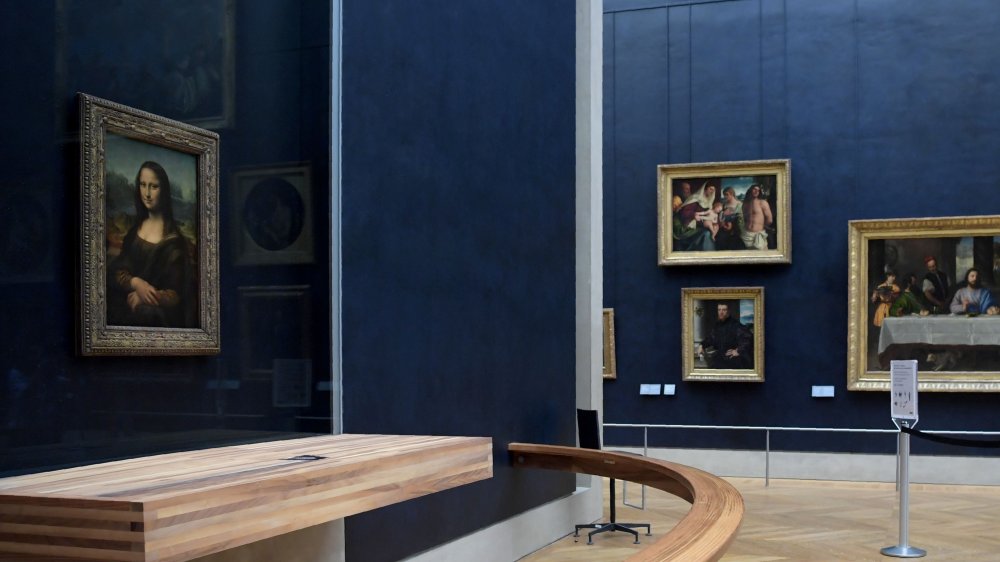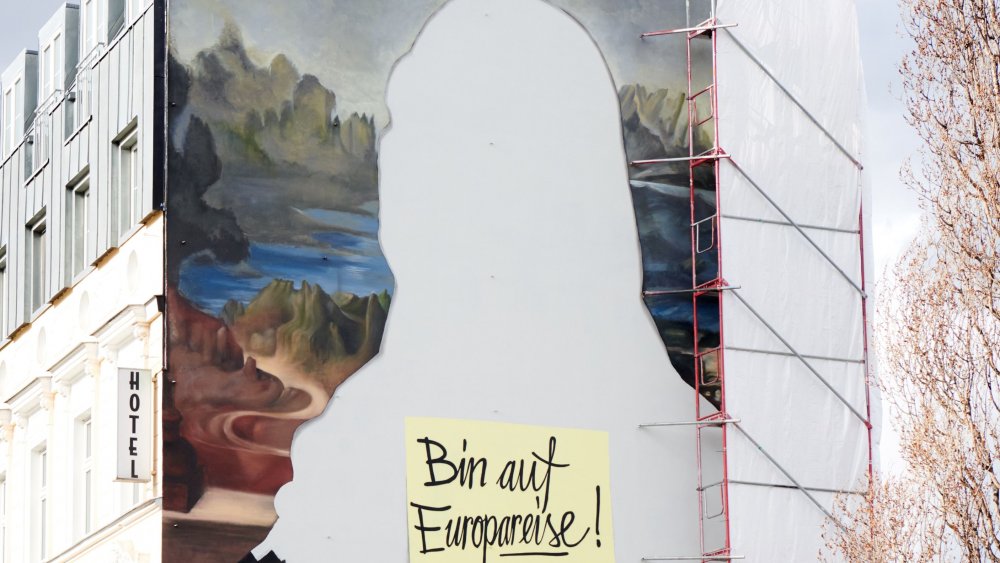What Really Happened When The Mona Lisa Was Stolen
Everybody, at some point, has stolen something, either in a moment of misspent youth or as a shady grown up who should really know better by now. Generally, though, our forays into criminality don't end with, say, the flip lighter we pocketed at Spencer's Gifts becoming a culturally ubiquitous international icon valued at nearly a billion dollars.
On August 20th, 1911, three men snuck into a supply closet at the Louvre and stayed there until the museum closed, waiting for their moment to yank a painting off the wall. The target: the Mona Lisa. What would've been a crime worthy of Carmen Sandiego's closest compatriots a few decades later was hindered by one fact: not a lot of people knew what the Mona Lisa was at the time.
And so, on the morning of August 21st, Vincenzo Lancelotti, Michele Lancelotti, and Vincenzo Perugia skittered out the front door of arguably the world's greatest art collection with Leonardo da Vinci's masterpiece hidden under a blanket, and nobody noticed for an astonishingly long time. According to NPR, it took 28 hours before somebody tapped a guard on the shoulder, pointed to an empty wall, and said something along the lines of "shouldn't there be a thing there?"
Uncharacteristic Mona-sticism
What followed was a media blitzkrieg that would've mirrored the kidnapping of the Lindbergh baby if that wasn't still twenty years away. Newspapers around the world reported on the missing portrait, and the Mona Lisa, days earlier considered an obscure piece that French art hipsters could point to and say "you've probably never heard of this, but it's pretty on point," became the most famous painting on the planet.
Of course, this was a huge drag for the thieves, who suddenly had merch on their hands that was too hot to move. Mona wound up sitting in the bottom of a trunk for the next 28 months, and during that period, the list of suspects became a who's who of the upper echelons of society, with Pablo Picasso brought in for questioning and J.P. Morgan being publicly suspected of having funded the theft. Then one day, Vincenzo Perugia nonchalantly asked an art dealer in Florence if he'd like to buy 18 pounds of pure, uncut, era-defining Renaissance portrait. Who could've known that flat out offering to sell someone a stolen da Vinci portrait, now known the world over as a lost masterpiece, would lead to his arrest?
In the end, the scorecard would read as follows: Perugia would be sentenced to eight months in prison, the Louvre got the Mona Lisa back, and, almost magically, everyone in the world could name at least one painting.

